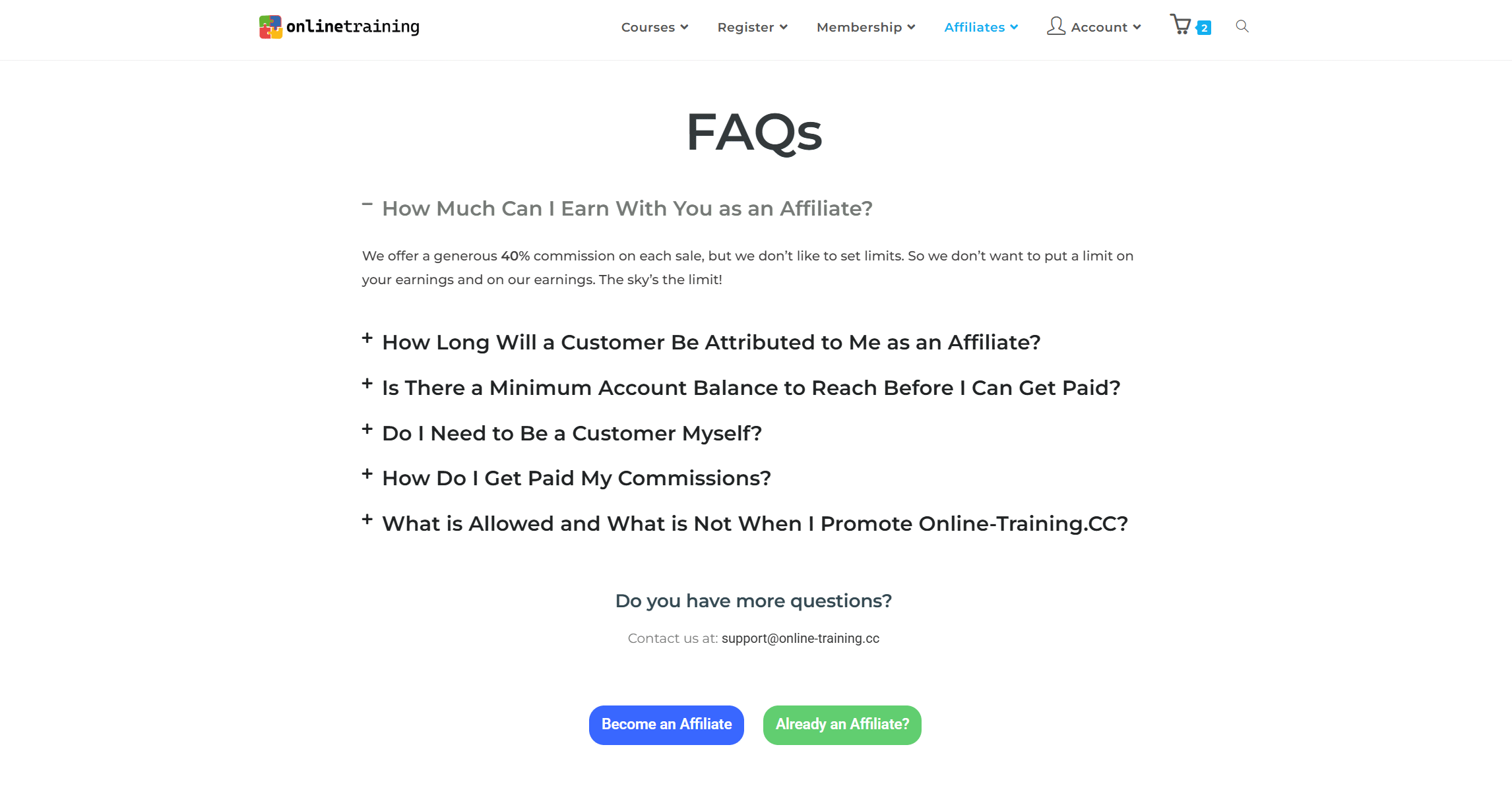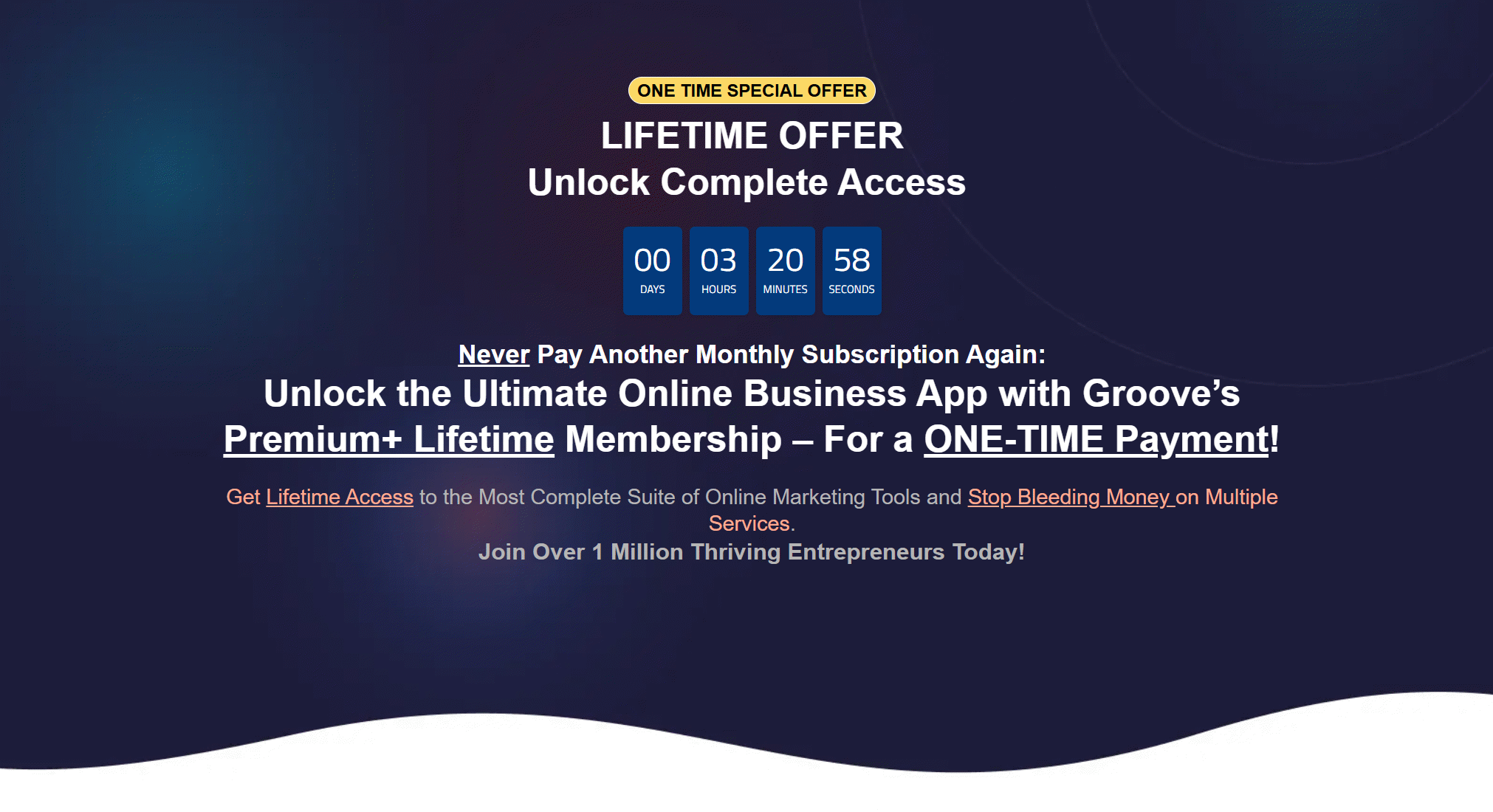Picture this: back in college, I once tried to sell homemade cookies at a campus event. The result? Three bucks and a lot of disappointed friends. If only I'd known about affiliate programs—I could've earned commissions with zero flour involved. Affiliate marketing feels like the bake sale you don't need to bake for: just share, track, and earn. But, as we'll see with Online-Training.CC, thriving isn't just about tossing your link around everywhere. Knowing your commission structures—how, when, and why you get paid—is what makes the difference between payday and crickets. Let's get into the nitty-gritty, minus the cookie crumbs.
Beyond the Numbers: What Actually Matters in Commission Structures?
When evaluating an Affiliate Program, it’s easy to get dazzled by a high commission rate—but the real story goes far beyond the headline number. Let’s break down what truly matters in commission structures, using Online-Training.CC’s 40% commission rate as a real-world example.
How Does a 40% Commission Rate Stack Up?
On paper, a 40% commission rate is impressive. Industry-wide, affiliate commissions can range from 5% (common in retail) to 50% or more (often in digital products). For online courses and digital content, 40% is considered generous. Programs like Online-Training.CC, which offer 40% on every successful purchase, put themselves at the top end of the market. This means affiliates can potentially earn substantial income with each referral—especially when promoting high-value offers like lifetime access to 200+ courses for $177.
Fixed vs. Recurring Commissions: Long-Term Impact
Not all commission structures are created equal. Some affiliate programs pay a one-time, fixed percentage per sale (as with Online-Training.CC), while others offer recurring commissions—a share of every payment a customer makes, month after month. As Pat Flynn says,
"Smart passive income is about working hard once and enjoying the rewards over and over."
While a high one-time payout is attractive, recurring commissions can build true passive income over time. Affiliates should weigh the immediate reward against the potential for ongoing earnings, depending on the program’s model and their own business goals.
Pay Per Sale, Click, or Lead: Matching Models to Your Strengths
Affiliate programs typically use one of three models:
Pay Per Sale (PPS): Earn a commission when a referred customer makes a purchase. Best for affiliates with targeted, purchase-ready audiences.
Pay Per Click (PPC): Earn for every click sent to the merchant, regardless of purchase. Ideal for affiliates with high-traffic channels.
Pay Per Lead (PPL): Earn when a referred visitor completes a specific action, like signing up for a free trial. Suits affiliates skilled in lead generation.
Online-Training.CC uses a pay-per-sale model, rewarding affiliates for driving real revenue. Affiliates should choose programs whose models align with their marketing style and audience behavior.
Commission Caps (or Lack Thereof): Who Wins?
Some affiliate programs limit your earnings with commission caps, restricting how much you can make per month or per sale. Others, like Online-Training.CC, have no earning limits—the sky’s the limit. This uncapped structure benefits ambitious affiliates, allowing them to scale their affiliate earnings without artificial barriers.
Other Key Considerations
Cookie Duration: Online-Training.CC tracks referrals for 30 days, crediting the last affiliate whose link was used.
Payout Threshold: Affiliates are paid once their balance reaches $150, with payments processed 32 days after the commission is earned via PayPal.
Transparency: Real-time dashboards and clear rules help affiliates track their progress and earnings.
Ultimately, the best commission structures balance attractive rates with fair, transparent policies and room for growth—empowering affiliates to maximize their success.
Cookie Duration, Link Tracking, and the Things Affiliates Ignore (But Shouldn't)
When it comes to maximizing your earnings with any affiliate program, understanding the details behind cookie duration and affiliate link tracking is non-negotiable. These are the behind-the-scenes mechanics that determine whether your hard-earned referrals actually count toward your commission. As Michelle Schroeder-Gardner puts it:
"The best affiliate marketers know their numbers—right down to the cookie duration."
Cookies Aren't Just for Eating: The 30-Day Window
In the world of affiliate marketing, a “cookie” is a small piece of data stored on a visitor’s browser when they click your affiliate link. For the Online-Training.CC Affiliate Program, this cookie lasts for 30 days. That means if someone clicks your link and makes a purchase within the next 30 days, you get the commission. But if they buy on day 31? No commission for you.
Cookie Duration: 30 days (Online-Training.CC)
What it means: You have a 30-day window for your referral to convert into a sale.
Missing this window is one of the most common ways affiliates lose out on commissions. Always remind your audience to act soon, and keep your links fresh in their minds.
The 'Last Affiliate' Rule: Why Timing Trumps Effort
Another critical detail in the commission structure is the “last affiliate” rule. Online-Training.CC credits the sale to the last affiliate link used before purchase. So, even if you introduced the customer to the product, if they click another affiliate’s link before buying, that affiliate gets the commission.
Attribution: Last affiliate link clicked before purchase gets the credit.
Strategy: Use retargeting, follow-up emails, and reminders to keep your link top-of-mind.
This makes timing and persistence just as important as your initial effort. Don’t just introduce—follow up!
Real-Life: How Link Tracking Saves Your Commissions
With affiliate link tracking built into your dashboard, you can monitor every click and conversion in real time. This is your safety net:
Spot broken or outdated links before they cost you sales.
Identify which channels (blog, email, social) drive the most conversions.
React quickly if you notice a drop in clicks or conversions.
Affiliates who ignore their tracking miss out on valuable data and, ultimately, earnings. Make it a habit to check your dashboard regularly.
Quick Tangent: Rookie Mistakes to Avoid
Accidental self-purchases: Online-Training.CC prohibits using your own affiliate link for personal buys. Don’t risk your account for a quick commission.
Promoting on coupon sites: Not allowed and can get you banned.
Modifying banners or offering unofficial discounts: Stick to approved materials and messaging.
Mastering these overlooked details—cookie duration, affiliate link tracking, and the rules of the affiliate program—is what separates top earners from the rest.
Rules of the Game: Promotion Do’s, Don’ts, and the Quirky Side of Ethics
Affiliate marketing best practices are not just about maximizing commissions—they’re about playing fair and building trust. When it comes to the Commission Structure Online-Training.CC offers, knowing the rules is as important as knowing your audience. Here’s how to promote online courses with integrity, creativity, and a dash of caution.
Promotion Do’s: Where Hustle Meets Heart
The best affiliates know how to blend authenticity with reach. Here’s where you can shine:
Social Media: Share your affiliate link on platforms like Facebook, Instagram, LinkedIn, and Twitter. Engage your audience with genuine recommendations.
Email Lists: If you have a newsletter or subscriber base, promote Online-Training.CC’s courses directly to your community.
Personal Blogs & Articles: Write honest reviews or guides about the courses, weaving your affiliate link naturally into the content.
Videos: Create YouTube tutorials or course walkthroughs, always disclosing your affiliate relationship.
Websites & Banners: Place official logos and banners on your site to drive traffic and conversions.
Friends & Family: Word-of-mouth is powerful—recommend courses to those you know.
These channels not only comply with the Affiliate Program rules but also foster genuine connections that drive long-term results.
Promotion Don’ts: The Fast Track to Trouble
While creativity is encouraged, certain tactics are strictly off-limits. Avoid these at all costs:
Coupon or Discount Websites: Posting your affiliate link here is prohibited and can result in commission clawbacks.
Falsely Advertising: Never exaggerate, mislead, or make claims that aren’t true about Online-Training.CC’s offerings.
Modifying Logos & Banners: Use only the official branding assets provided—no tweaks or edits allowed.
Self-Purchases: Using your own affiliate link to buy courses is a clear violation.
Unofficial Discounts: Don’t invent or distribute discount codes that aren’t authorized by the program.
Violating these rules can lead to immediate removal from the program and loss of any pending commissions. As the saying goes:
“Integrity is doing the right thing, even when no one is watching.” — C.S. Lewis
The Quirky Side of Ethics: Jenna the Affiliate Maverick
Consider the cautionary tale of Jenna, an ambitious affiliate who thought outside the box—by posting her link on a popular coupon site and tweaking the Online-Training.CC logo for her blog. Her clicks soared, but so did the red flags. Within days, Jenna’s account was terminated, and her commissions vanished. The lesson? Creativity is good—until it crosses policy lines.
Ethical promotion not only preserves the integrity of the affiliate program but also maximizes your long-term earning potential. Overstepping boundaries may offer a quick win, but it’s a surefire way to sabotage your affiliate standing and reputation.
Getting Paid: The (Often Overlooked) Fine Print
Minimum Payout Threshold: $150—Motivator or Obstacle?
One of the first details affiliates notice in any affiliate program is the minimum payout requirement. Online-Training.CC sets this threshold at $150. On the surface, this can be a strong motivator: it encourages affiliates to keep promoting until they reach a meaningful sum. For experienced marketers, this is a nudge to stay active and consistent, maximizing their commission rate and overall affiliate earnings.
However, for beginners or those with smaller audiences, a $150 minimum can feel like a hurdle. It may take several months to reach the threshold, especially if your traffic or conversion rates are modest. This is a common structure in commission structures across the industry, designed to reduce administrative costs and encourage ongoing engagement. Still, it’s essential to budget accordingly and set realistic expectations about when you’ll actually see your earnings.
Payment Methods: PayPal-Only Payouts
When it comes to payment methods, Online-Training.CC currently pays affiliates exclusively through PayPal. This is convenient for many, as PayPal is widely used and offers quick access to funds. However, PayPal fees can eat into your profits, especially for international affiliates. If you prefer bank transfers or other payment methods, you may need to factor in these extra costs or look for alternative programs that offer more flexibility.
For those who dislike PayPal or face restrictions in their country, it’s worth reaching out to support to ask about future payment options. But for now, plan on using PayPal and account for any associated fees in your profit calculations.
Payment Cycle: Understanding the 32-Day Delay
Unlike instant payouts, affiliate program payments are almost always delayed. Online-Training.CC processes payments 32 days after the commission is earned. This waiting period is not arbitrary; it aligns with standard refund or chargeback windows. By waiting, the company ensures that sales are legitimate and not subject to reversal. This protects both the business and the affiliate from potential fraud or clawbacks.
Monthly or delayed payments are standard in affiliate marketing and help with fraud prevention. As an affiliate, it’s crucial to understand this cycle and plan your cash flow accordingly.
Strategic Use of Payout Gaps: Planning Your Next Move
Seasoned affiliates know that payout lulls are not dead time—they’re an opportunity. As John Crestani puts it:
"Treat affiliate earnings as reinvestment capital—it's the secret to building real momentum."
Many top performers use the gap between earning and receiving commissions to analyze campaign performance, test new strategies, or reinvest in paid traffic. By treating your affiliate earnings as working capital, you can fuel your next campaign and accelerate your growth within the affiliate program.
Remember, payout processes in affiliate marketing are rarely instant. Budget for these cycles, and use them to your advantage.
Wild Cards and Unwritten Rules: Lessons From The Field
In the world of affiliate marketing, even the most carefully planned strategies can be upended by the unexpected. As Neil Patel wisely put it,
"The best affiliate success stories are equal parts strategy and serendipity."
This rings especially true for those navigating the Affiliate Program at Online-Training.CC, where a generous 40% commission rate and a library of 200+ online courses seem to promise unlimited earning potential. But as seasoned marketers know, the real magic happens at the intersection of timing, audience fit, and a dash of luck.
Consider the story of an affiliate who, after a single viral tweet, saw a sudden spike in course sales—netting a windfall that dwarfed months of steady effort. While this kind of success is exhilarating, it’s rarely repeatable. Viral moments are unpredictable wild cards, not reliable strategies. The lesson? While it’s tempting to chase viral hits, long-term success in affiliate marketing comes from understanding your audience and consistently delivering value, not just hoping for lightning to strike twice.
When comparing commission structures, it’s easy to assume that a 40% rate is the ultimate advantage. Online-Training.CC’s no-cap commission model is certainly attractive, especially when paired with a $177 lifetime deal on their courses. However, the most successful affiliates know that matching the right offer to the right audience often trumps chasing the highest percentage. A well-aligned offer can convert at a much higher rate, leading to greater overall earnings—even if the commission rate is lower elsewhere.
Digging into the Affiliate Program FAQs reveals a few unwritten rules and hidden tips. For example, while you don’t need to be a customer to promote Online-Training.CC, those who take the time to familiarize themselves with the courses tend to see better results. Authenticity matters; audiences can spot when a recommendation is genuine versus when it’s just a sales pitch. Another key detail: the program uses a 30-day cookie and credits the last affiliate link clicked. This means timing and follow-up can make all the difference in securing your commission.
Imagine, for a moment, the perfect affiliate program. It would offer competitive commissions, transparent tracking, and robust support. But more importantly, it would foster relationships—between affiliates, brands, and audiences—built on trust and shared value. Online-Training.CC comes close, offering no commission caps and open registration even for non-customers. Yet, as every experienced affiliate learns, success is rarely about the program alone. It’s about adapting quickly, learning from both wins and losses, and building genuine connections.
In conclusion, cracking the code of affiliate program commission structures isn’t just about finding the highest rate or the flashiest offer. It’s about understanding the wild cards, respecting the unwritten rules, and focusing on what truly drives results: the right offer, at the right time, for the right audience. That’s where real, sustainable affiliate marketing success is found.



